Caso de Estudio
El ERG apoya la precisión diagnóstica en un paciente pediátrico
por el Dr. Xiaoyan Ding, Universidad Sun Yat Sen, China
In pediatric ophthalmology, diagnosing eye disease is often complex due to patients’ inability to communicate or comply with exam procedures, which are most often designed for use in adult populations. This case study involving a 3-year-old boy with bilateral high myopia (-6.25D and -7.00D), normal structural results, and no extraocular features demonstrates how the RETeval ERG aborda estos desafíos.

¿Por qué se realizó la prueba ERG?
We needed to determine whether the patient had “normal” versus pathologic myopia and whether there were additional underlying problems.
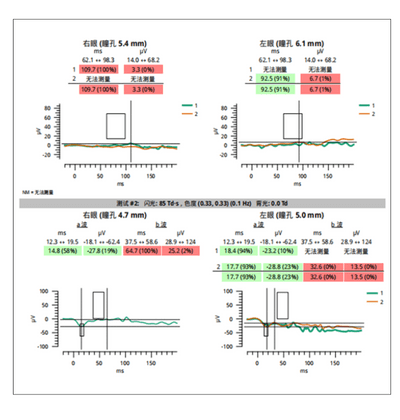
¿Cuáles fueron los hallazgos del ERG?
El ERG adaptado a la oscuridad mostró anomalías significativas. Esto nos llevó a la conclusión de que lo más probable es que el paciente tenga una enfermedad hereditaria de la retina. Tras una revisión más detallada de los resultados de la prueba, notamos una forma de onda electronegativa en el segundo paso de prueba adaptado a la oscuridad. La forma de onda electronegativa significa que la onda-a se conserva, pero falta la onda-b. Esta es una representación típica de la ceguera nocturna estacionaria congénita.
How did the ERG influence the patient’s care?
Los hallazgos del ERG nos permitieron asesorar a la familia sobre las pruebas genéticas y aconsejarles que asistieran a la atención de baja visión y a las evaluaciones oftalmológicas periódicas. En ausencia de un diagnóstico correcto, es probable que este niño no reciba la atención necesaria, lo que podría conducir a más desafíos clínicos, así como a dificultades en la escuela. La ERG con RETeval ayudó a dilucidar la causa de la alta miopía en un niño, sin el uso de sedación.
Conclusión
Este caso pone de manifiesto la importancia de añadir las pruebas ERG en el proceso diagnóstico. Un diagnóstico correcto ayudó a prevenir tratamientos equivocados, al tiempo que impulsó el inicio de los servicios necesarios, como los programas de baja visión. Con el asesoramiento adecuado, el paciente estará mejor equipado para navegar por el camino hacia la edad adulta.
See the patient’s test results
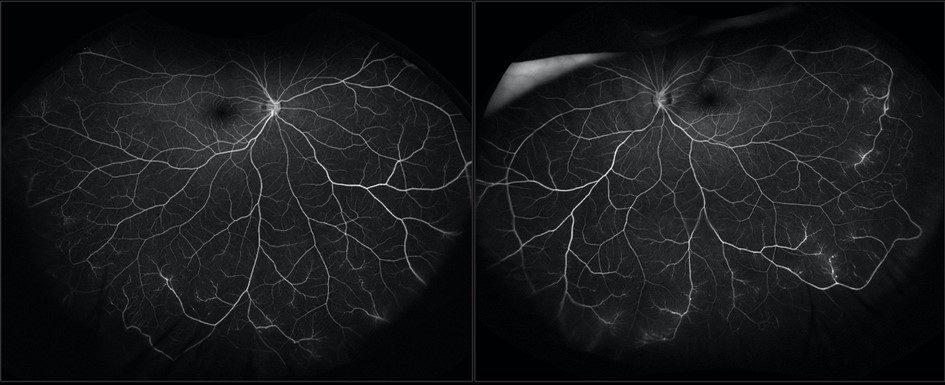
Fluorescein Angiography
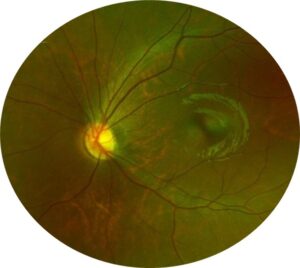
Fundus imaging: right eye color
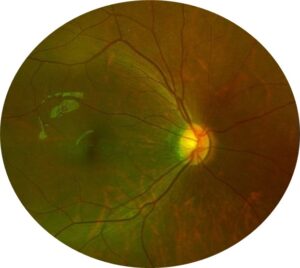
Fundus imaging: left eye color

OCT left hand side
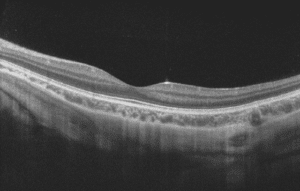
OCT right hand side

Dr. Xiaoyan Ding
Sun Yat Sen University, China
Dr. Ding is an esteemed retinal specialist with a particular focus on pediatric retina. She earned her MD and PhD from Sun Yat-sen University in 2006 and conducted post-doctoral research at the National Eye Institute (NEI) in 2007. She served as the director of the Children’s Center at ZOC during 2018-2023 and currently is the director, retinal service at the same location. Her extensive experience encompasses clinical studies in pediatric diseases. With a decade of clinical practice in pediatric retina, Dr. Ding established the pediatric early-onset high myopia registry, successfully enrolling over 800 highly myopic children. Her research delved into the etiology, genetic and developmental abnormalities, and clinical characteristics of high myopia in children, along with phenotype and genotype correlation analyses.
Dr. Xiaoyan Ding has a prolific publication record, with over 200 peer-reviewed manuscripts. Her innovative contributions have resulted in 8 granted patents and 2 provisional patents. She has played an active role in shaping the field of ophthalmology by contributing to the development of several critical guidelines and expert consensus documents, including Guidelines for the Diagnosis and Treatment of Retinoblastoma in China (2019),Clinical Multifocal Electroretinogram Standards (2020),Expert Consensus on Intravitreal anti-VEGF for Retinopathy of Prematurity (2021),and Expert Consensus on the Diagnosis and Treatment of Retinopathy of Prematurity (2023).



